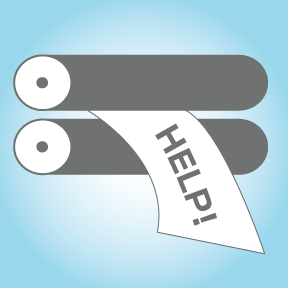What is Your Machine Not Telling You?

Our machines have a story to tell. Every input and output, start and stop, adjustment and readjustment has some sort of an impact on the machine. Whether during the R&D process or embedded into the final design, investing in ways to help machines "speak" to its developers or end users can result in a highly-differentiated, game-changing product.
An Effective Mechanical Interpreter
Computers are incredibly fast, accurate and stupid. Human beings are incredibly slow, inaccurate and brilliant. Together they are powerful beyond imagination.
– Albert Einstein
Contrary to Dr. Einstein’s beliefs, machines aren't so stupid anymore. Today's machines are highly automated and require less human interaction to perform their functions than ever. As a result, design engineers are tasked with the challenge of finding new ways to make smart machines smarter. From a mechanical perspective, Pressure Mapping technology has served as an effective interpreter for engineers to learn their machine's needs. Pressure mapping provides important data about the machine's structure and performance, which can create new opportunities for advancement.
The Slightest Misalignment Can Make a Significant Impact
In the machine alignment process, pressure mapping technology can help become the machine's mouthpiece to capture important information that can improve performance. During operations, there are several internal and external factors that can affect the interface contact and fitting of machine components. Even minor changes in alignment can reduce quality or prompt product defects if gone unnoticed. This is especially critical for printing & packaging industries, product labeling and any other operation that utilizes nip rolls in their machine design.
A machine's operator can only assume they are inputting and outputting product at perfect linearity if there’s nothing telling them otherwise. However, machine alignment should never be left up to chance.
Pressure mapping technology provides applications that allow R&D design engineers, field service technicians and machine operators to essentially squeeze their way into paper-thin spaces to obtain qualitative data on nip roll contact pressure. This data can be used to help to develop a set of standards for the machine’s alignment and ensure product output is at the highest quality run-after-run.
Enough with the Silent Treatment: Consider Ways to Obtain Actionable Data from Your Machines
Machines do have a voice; they just don't always have a way to express themselves. Utilizing existing technology in creative ways can essentially open new outlets for conversation between operators and their machine. Pressure mapping is a very flexible technology and an effective tool to learn more about the machine's inner workings and improve product quality. When embedded, pressure mapping technology can also be a significant product differentiator and help set a new standard for end-user experience.
Knowledge is power - the more opportunities we can provide our machines to talk to us, the more confidence we can embed into the machine's design.
Think you’re missing out on a conversation with your machine? Start a conversation with us.
